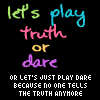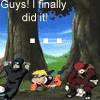Design Patterns and Business Models for the Next Generation of Software
by Tim O'Reilly
09/30/2005
The bursting of the dot-com bubble in the fall of 2001 marked a turning point for the web. Many people concluded that the web was overhyped, when in fact bubbles and consequent shakeouts appear to be a common feature of all technological revolutions. Shakeouts typically mark the point at which an ascendant technology is ready to take its place at center stage. The pretenders are given the bum's rush, the real success stories show their strength, and there begins to be an understanding of what separates one from the other.
The concept of "Web 2.0" began with a conference brainstorming session between O'Reilly and MediaLive International. Dale Dougherty, web pioneer and O'Reilly VP, noted that far from having "crashed", the web was more important than ever, with exciting new applications and sites popping up with surprising regularity. What's more, the companies that had survived the collapse seemed to have some things in common. Could it be that the dot-com collapse marked some kind of turning point for the web, such that a call to action such as "Web 2.0" might make sense? We agreed that it did, and so the Web 2.0 Conference was born.
In the year and a half since, the term "Web 2.0" has clearly taken hold, with more than 9.5 million citations in Google. But there's still a huge amount of disagreement about just what Web 2.0 means, with some people decrying it as a meaningless marketing buzzword, and others accepting it as the new conventional wisdom.
This article is an attempt to clarify just what we mean by Web 2.0.
In our initial brainstorming, we formulated our sense of Web 2.0 by example:
Web 1.0 Web 2.0
DoubleClick --> Google AdSense
Ofoto --> Flickr
Akamai --> BitTorrent
mp3.com --> Napster
Britannica Online --> Wikipedia
personal websites --> blogging
evite --> upcoming.org and EVDB
domain name speculation --> search engine optimization
page views --> cost per click
screen scraping --> web services
publishing --> participation
content management systems --> wikis
directories (taxonomy) --> tagging ("folksonomy")
stickiness --> syndication
The list went on and on. But what was it that made us identify one application or approach as "Web 1.0" and another as "Web 2.0"? (The question is particularly urgent because the Web 2.0 meme has become so widespread that companies are now pasting it on as a marketing buzzword, with no real understanding of just what it means. The question is particularly difficult because many of those buzzword-addicted startups are definitely not Web 2.0, while some of the applications we identified as Web 2.0, like Napster and BitTorrent, are not even properly web applications!) We began trying to tease out the principles that are demonstrated in one way or another by the success stories of web 1.0 and by the most interesting of the new applications.
Full Stories
Sunday, June 10, 2007
What Is Web 2.0
Subscribe to:
Post Comments (Atom)






1 comments:
Need To Increase Your ClickBank Banner Commissions And Traffic?
Bannerizer makes it easy for you to promote ClickBank products with banners, simply visit Bannerizer, and grab the banner codes for your favorite ClickBank products or use the Universal ClickBank Banner Rotator to promote all of the available ClickBank products.
Post a Comment